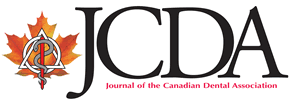 |
Current Issue | Subscriptions | ||||||
| Back Issues | Advertising | |||||||
| More Information | Classified Ads | |||||||
| For Authors | Continuing Education | |||||||
|
||||||||
 |
|
Evaluation of Apical Filling after Root Canal Filling by 2 Different TechniquesFULL TEXT
Tamer Tasdemir, DDS, PhD A b s t r a c tMaterials and Methods: Thirty extracted human lower premolars were instrumented with ProTaper rotary files (Dentsply Maillefer) and then randomly divided into 2 groups of 15 teeth each. The first group was filled using the single-cone technique with a tapered gutta-percha cone. The second group was filled with the lateral condensation technique. Horizontal sections were cut 2 and 4 mm from the apical foramen of each tooth. Photomicrographs of the apical surface of each cross-section were obtained at magnification Χ40. Digital image analysis was used to measure the overall area of the canal and the aggregate area occupied by gutta-percha; from these values, the percent gutta-percha-filled area was calculated. The data were compared by t test. Results: The single-cone technique produced significantly greater percent gutta-perchafilled area at 2 mm from the apex (p = 0.046), but there was no significant difference between the techniques at 4 mm from the apex (p = 0.17). Conclusions: These results suggest that the single-cone technique with tapered guttapercha cones may yield better filling (measured as the percent gutta-percha-filled area) than the lateral condensation technique, at a level 2 mm from the apex.
|
|
|
Full text provided in PDF format |
|
| Mission Statement & Editor's Message |
Multimedia Centre |
Readership Survey Contact the Editor | Franηais |
|